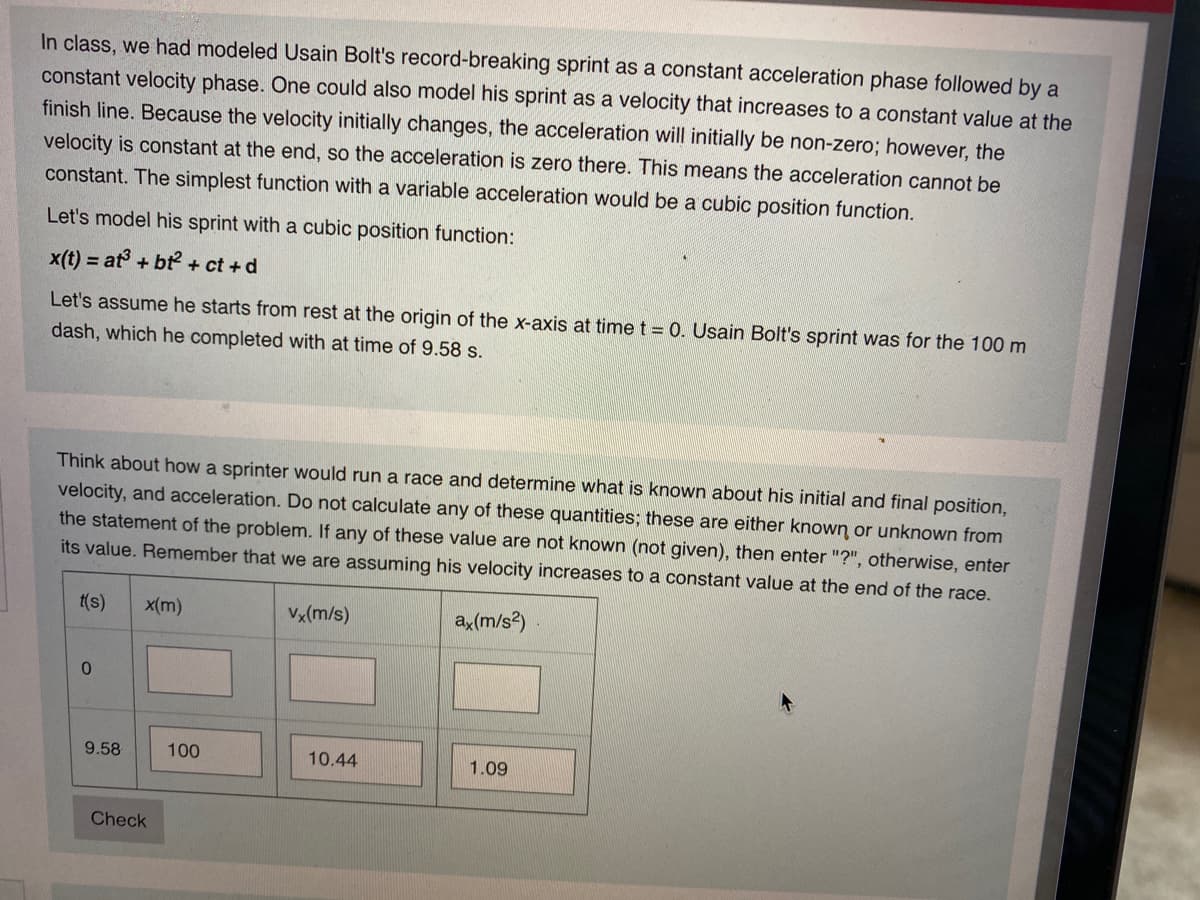In class, we had modeled Usain Bolt's record-breaking sprint as a constant acceleration phase followed by constant velocity phase. One could also model his sprint as a velocity that increases to a constant value at t finish line. Because the velocity initially changes, the acceleration will initially be non-zero; however, the velocity is constant at the end, so the acceleration is zero there. This means the acceleration cannot be constant. The simplest function with a variable acceleration would be a cubic position function. Let's model his sprint with a cubic position function: x(t) = at + bt + ct +d %3D Let's assume he starts from rest at the origin of the x-axis at timet = 0. Usain Bolt's sprint was for the 100 m dash, which he completed with at time of 9.58 s. Think about how a sprinter would run a race and determine what is known about his initial and final position, velocity, and acceleration. Do not calculate any of these quantities; these are either known or unknown from the statement of the problem. If any of these value are not known (not given), then enter "?", otherwise, enter its value. Remember that we are assuming his velocity increases to a constant value at the end of the race. t(s) x(m) Vx(m/s) ax(m/s?) 9.58 100 10.44 1.09 Check
Unitary Method
The word “unitary” comes from the word “unit”, which means a single and complete entity. In this method, we find the value of a unit product from the given number of products, and then we solve for the other number of products.
Speed, Time, and Distance
Imagine you and 3 of your friends are planning to go to the playground at 6 in the evening. Your house is one mile away from the playground and one of your friends named Jim must start at 5 pm to reach the playground by walk. The other two friends are 3 miles away.
Profit and Loss
The amount earned or lost on the sale of one or more items is referred to as the profit or loss on that item.
Units and Measurements
Measurements and comparisons are the foundation of science and engineering. We, therefore, need rules that tell us how things are measured and compared. For these measurements and comparisons, we perform certain experiments, and we will need the experiments to set up the devices.

Trending now
This is a popular solution!
Step by step
Solved in 2 steps with 2 images









